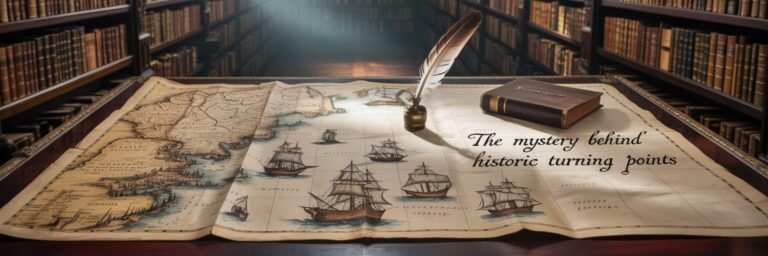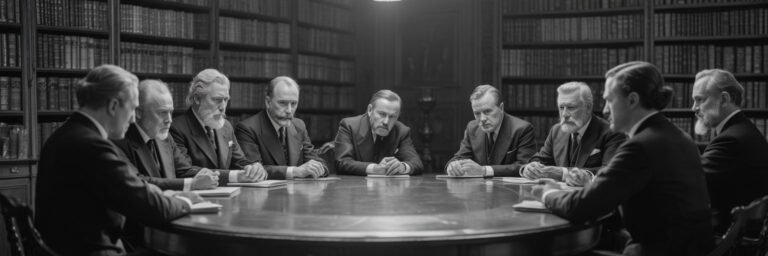INTRODUCTION
The finely-woven tapestry of history is dotted with the vibrant threads of propaganda, a powerful tool used by those in power to craft narratives, shape ideologies, and direct the masses. Propaganda, from ancient murals glorifying emperors to the modern “Fake News” phenomenon, has been ever-present, reflecting and influencing socio-cultural shifts. This article will explore the fascinating linkage between propaganda, power, and cultural shifts, a topic that’s as engaging as it is significant.
HISTORICAL BACKGROUND
The use of propaganda as a tool for shaping and influencing public opinion goes back to antiquity. The Ancient Egyptians used hieroglyphics and murals to portray Pharaohs as divine and to illustrate their victories in battle, a form of propaganda designed to reinforce the authority and divinity of the Pharaoh. In Ancient Rome, a similar approach was used with the circulation of coins, sculptures, and public performances that promoted the Emperor’s image.
At its core, propaganda in these instances was a tool for maintaining power, legitimizing the rule of the elite, and directing public sentiment. It was less about full-blown deception than it was about narrative control. It’s also worth noting that propaganda was not inherently malevolent; most of its historical uses were simply eloquent expressions of statecraft.
As we moved into the modern era, propaganda found new channels: first print media, then radio, television, and now the internet. The Protestant Reformation in the 16th century, for example, was aided greatly by the printing press, which was used to spread messages and narratives dissenting from Catholic doctrines. Similarly, during World War I and II, propaganda was rampantly used to generate nationalistic fervor, boost morale on the home front, demonize the enemy, and justify governmental actions.
THEORIES AND INTERPRETATIONS
The narratives woven by propaganda have always been constructed to serve the ideology or purpose of those in power. As such, propaganda’s interpretation in history is tied closely to the intentions and motivations behind its use, leading to academic debates and further investigations into its implications.
One of the most well-known models for understanding propaganda is the “Inoculation Theory.” Developed by psychologist William J. McGuire in 1961, this model suggests that by presenting weaker versions of an argument, individuals would build up resistance to stronger versions of that argument, allowing those in power to influence public perception subtly.
Another interpretation of propaganda comes from historian Robert Ensor, who in his study of World War I propaganda, acknowledged it as a necessary evil for maintaining morale on the home front; a sentiment shared by Winston Churchill. However, academic Alex Carey argued that propaganda’s main function was to promote business interests and push public opinion toward corporate capitalism, particularly in America during the 20th century.
With these varied interpretations, propaganda’s role in power dynamics and cultural shifts becomes increasingly complex.
MYSTERIES AND CONTROVERSIES
The historiography of propaganda often leads to controversial debates and lingering mysteries. The ‘atrocity propaganda’ of World War I is a notable example. The British government circulated stories of German soldiers committing horrific acts, which many contemporaries and later historians labeled as exaggeration or outright lies. The reality remains contentious, with ongoing debates about the extent and veracity of these claims.
Another controversial aspect of propaganda history involves the extensive use of propaganda by totalitarian regimes throughout the 20th century, such as Nazi Germany and Soviet Russia. However, the degree to which their propaganda influenced or merely reflected existing cultural prejudice and paranoia is a subject of intense debate and research, involving questions of agency, manipulation and culpability.
SYMBOLISM AND CULTURAL SIGNIFICANCE
Emerging from many cultural shifts, the symbolism employed in propaganda narratives often has profound cultural significance. In the early 20th century, for instance, American war posters frequently depicted Lady Liberty or Uncle Sam to invoke feelings of patriotism – becoming cultural icons unto themselves. Similarly, during the Cultural Revolution in China, Mao’s image became a potent symbol of the revolution’s ideals.
The layering of such symbolism enhanced the power of propaganda, enabling it to tap into deeply ingrained cultural narratives and beliefs, and effectively frame new ideology within a recognizable context.
MODERN INVESTIGATIONS
Modern investigations into propaganda seek to understand its role in shaping history and defining our present. This realm is largely tackled by media academics, focusing on tools used to spread propaganda, from political cartoons in the past to meme culture and social media today. Their work is further supplemented by linguists, psychologists, and sociologists who explore how propaganda influences human behaviour and societal structures.
Today’s ‘post-truth’ era, marked by an onslaught of ‘fake news’ and misinformation, has brought the study of propaganda back into the public consciousness. The pervasiveness of digital platforms amplifies the reach and speed of propaganda, raising new debates about regulation, responsibility, and the defence of objective truth – issues that hark back to the very roots of propaganda within societies centuries ago.
LEGACY AND CONCLUSION
The legacy of propaganda resonates throughout history and its impact is still felt today. Its winding journey, from ancient murals to viral tweets, remains a testament to humanity’s fascination with narrative and influence. Propaganda has evolved with society, shaping and being shaped by the tidal shifts of culture and power, becoming a definitive feature of human society.
In the end, the study of propaganda should not be seen as a cautionary tale about manipulation by the powerful but as an invitation to understand the complexities of communication, power and cultural dynamics. At its heart, the historical exploration of propaganda entreats us all to seek more critically about the narratives we consume and the cultures we inhabit, thus enriching our shared journey through history.






